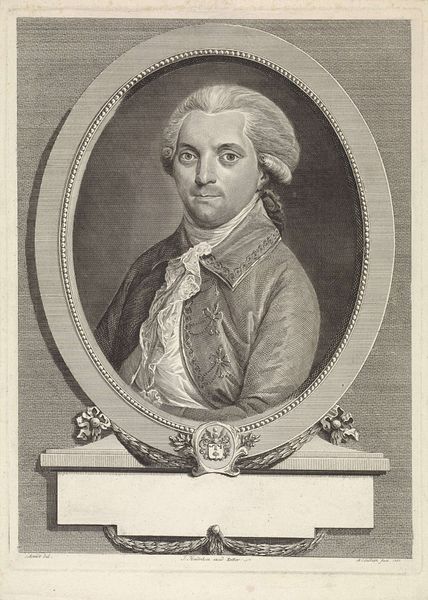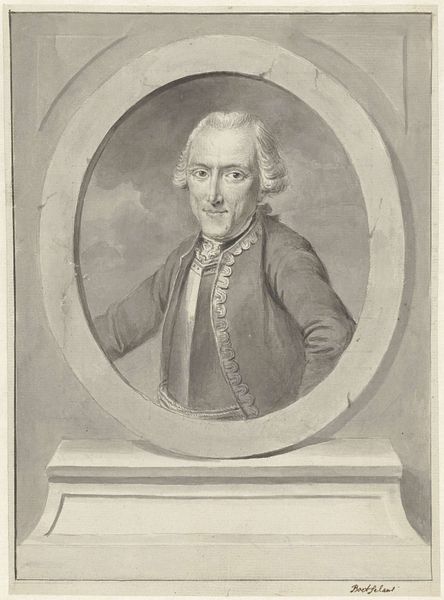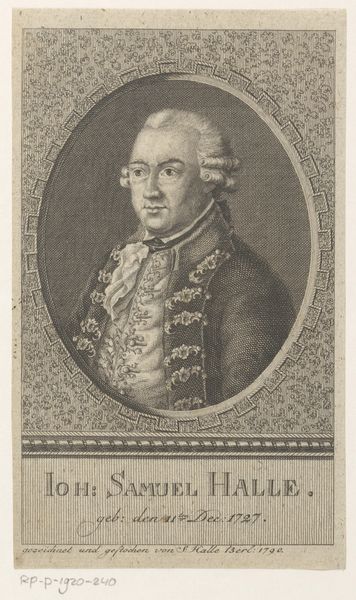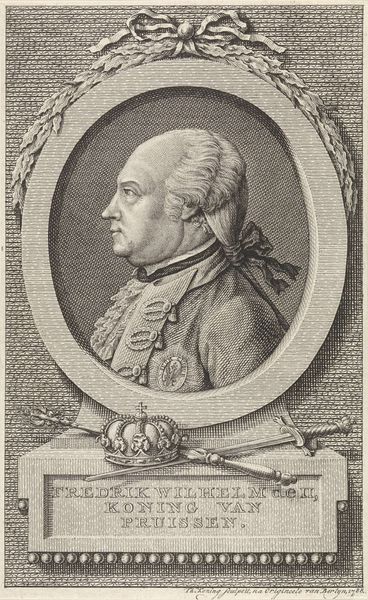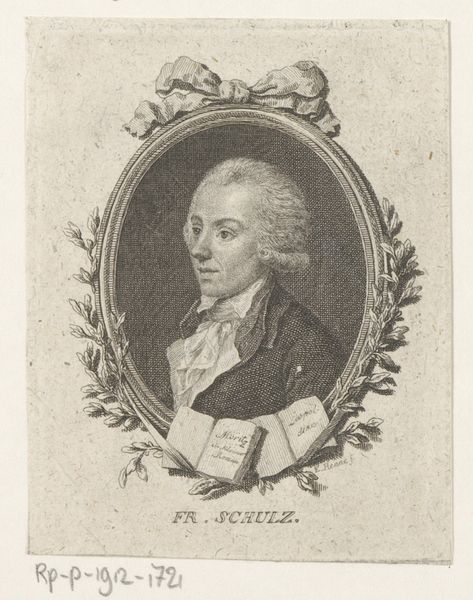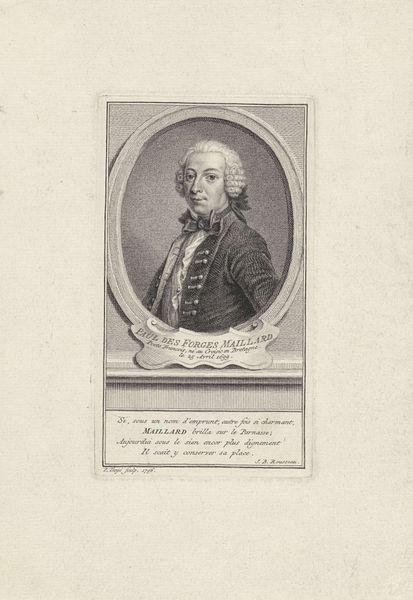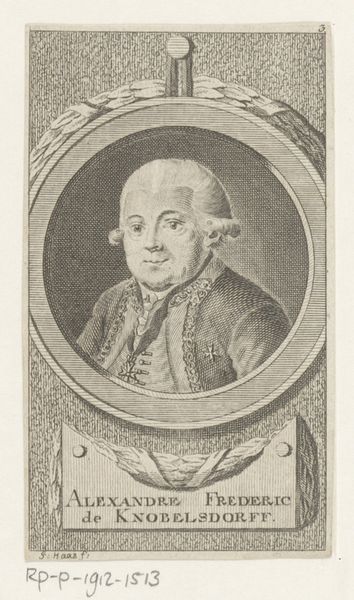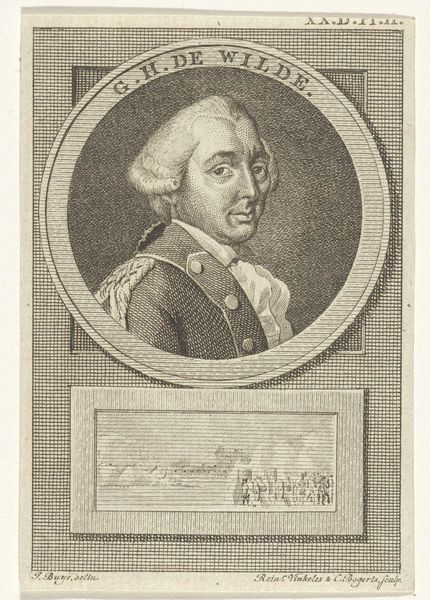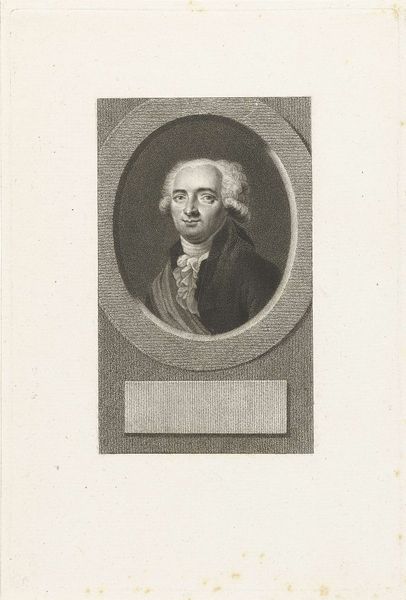
print, engraving
#
portrait
#
neoclacissism
# print
#
old engraving style
#
form
#
historical photography
#
line
#
history-painting
#
academic-art
#
engraving
#
realism
Dimensions: height 405 mm, width 302 mm
Copyright: Rijks Museum: Open Domain
This is a portrait of Willem Bilderdyk, made by Mathias de Sallieth in the late 18th century. It’s an engraving, a medium that allowed for the relatively easy reproduction and dissemination of images during this time. Consider the social context: the Netherlands in the late 1700s was a society structured by class and status. Portraits like this one, with the sitter fashionably dressed, served to reinforce social hierarchies and project an image of respectability and learning. Think about the conventions of portraiture during this era and how it became an important tool for the elites to assert their status. Institutions like the art academy played a key role in promoting these visual codes. Historians rely on a range of resources, from archival documents to studies of fashion and social customs, to understand the full significance of images like this. In that way, the meaning of art is deeply rooted in its social and institutional context.
Comments
No comments
Be the first to comment and join the conversation on the ultimate creative platform.
